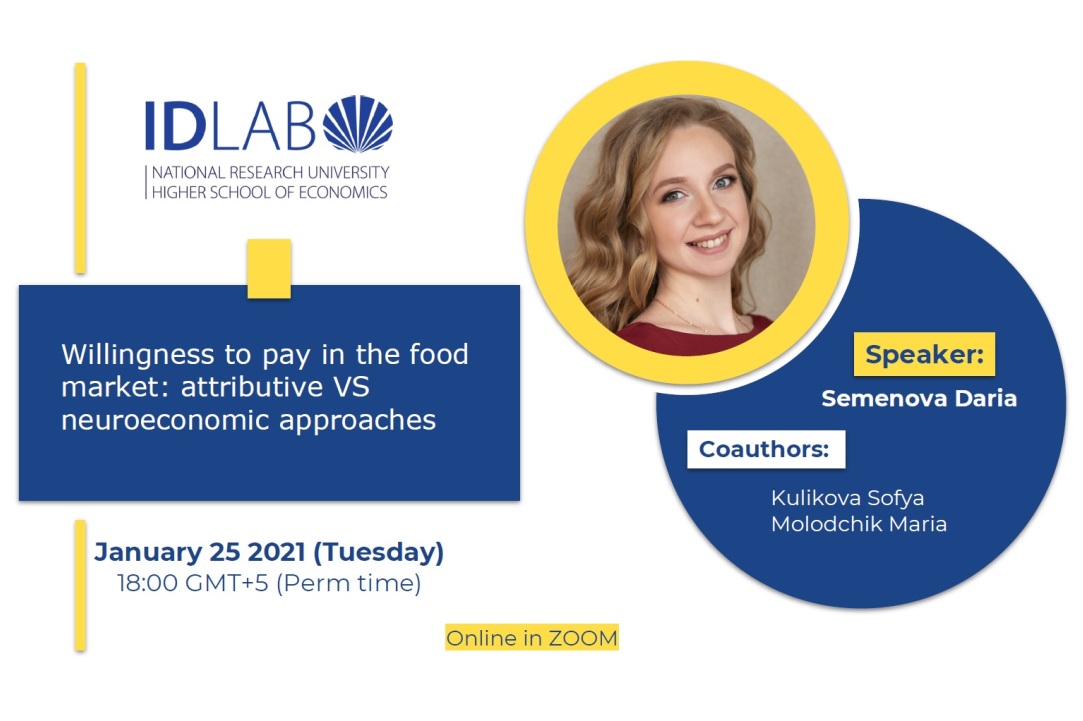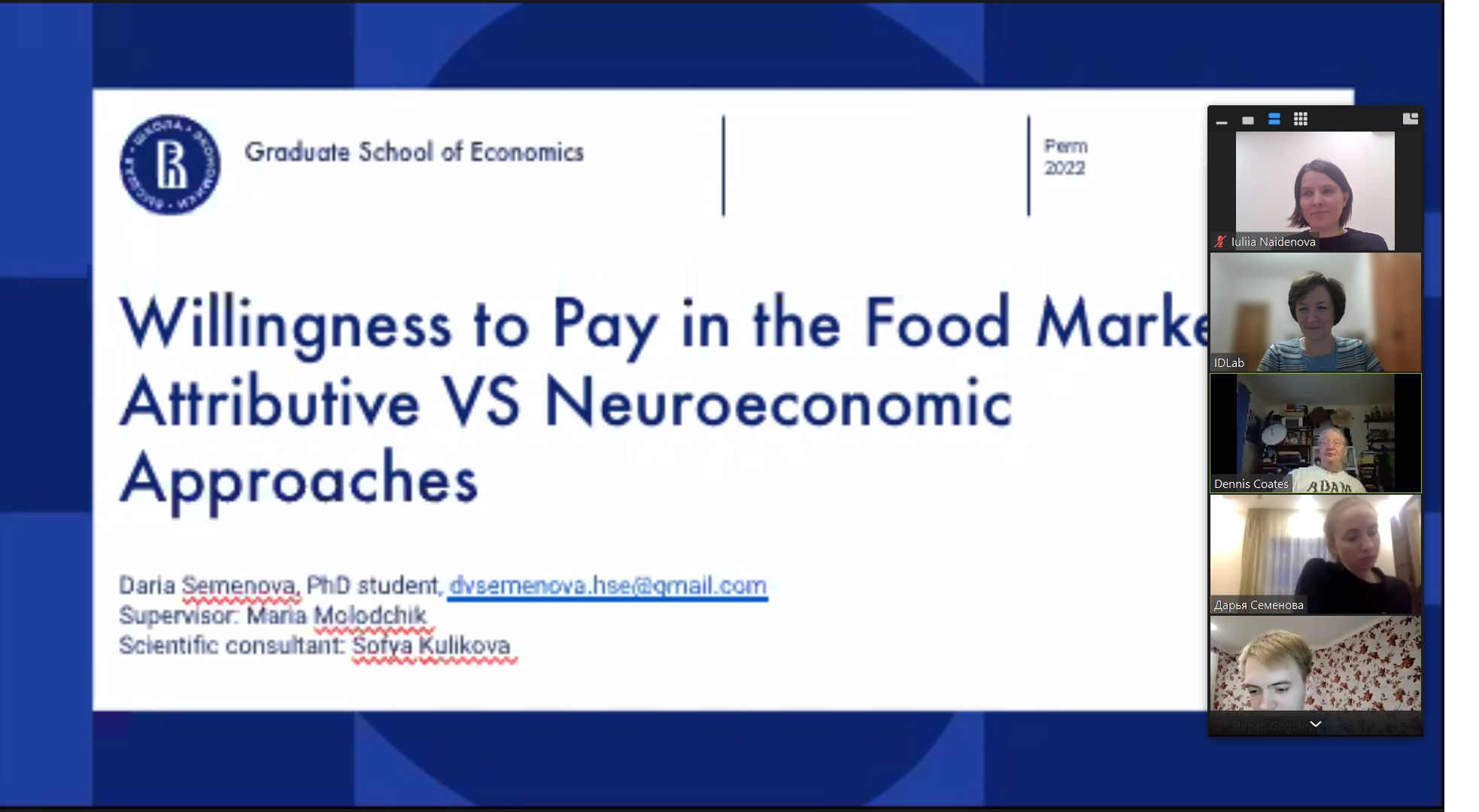ID Lab ONLINE Workshop
Daria Semenova presented her Candidate of Science (PhD) thesis on Willingness to pay in the foodmarket: attributive VS neuroeconomic approaches. The thesis is supervised by Sofya Kulikova and Maria Molodchik

For decades willingness to pay estimation was generally made by traditional economic methods, such as discrete choice models. Recently, however, the validity of the results obtained using traditional approaches has been questioned, as choice models have a number of significant disadvantages. One of these is the tendency to underestimate price elasticity, especially for low-cost products (Rausch et al., 2017). To overcome this shortcoming, data on brain activity obtained using electroencephalography can be used. In the study the authors combine traditional economic approach and some neuroeconomics techniques to improve the willingness to pay estimates. 
